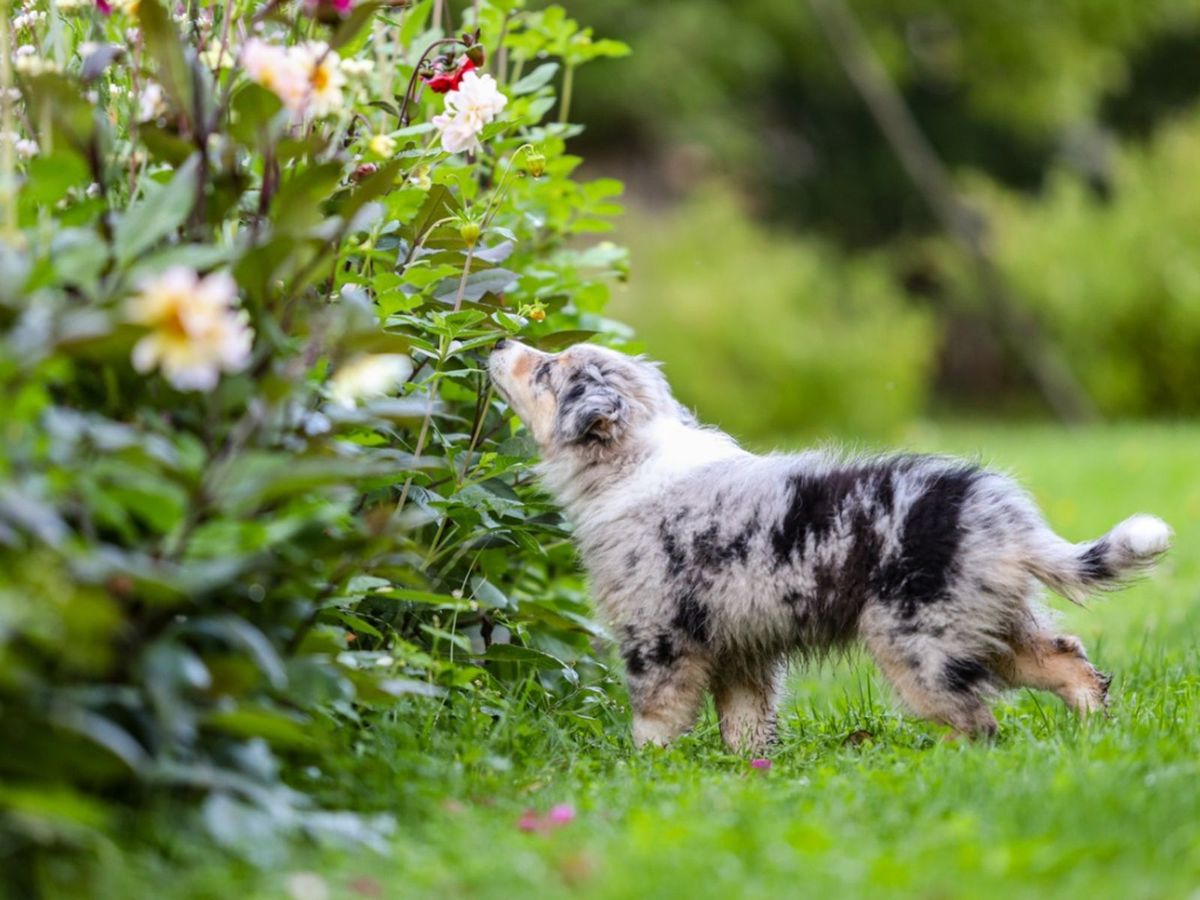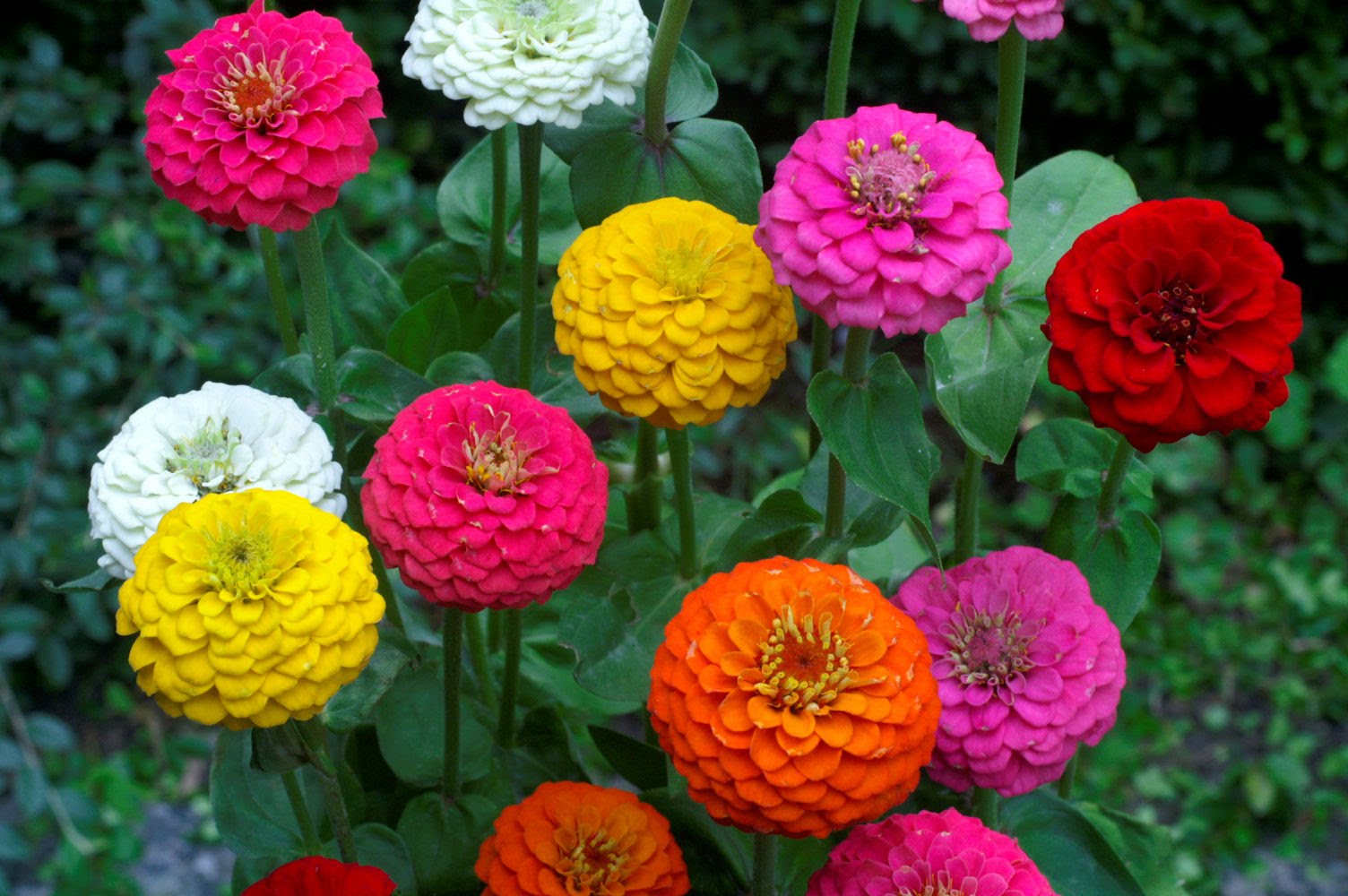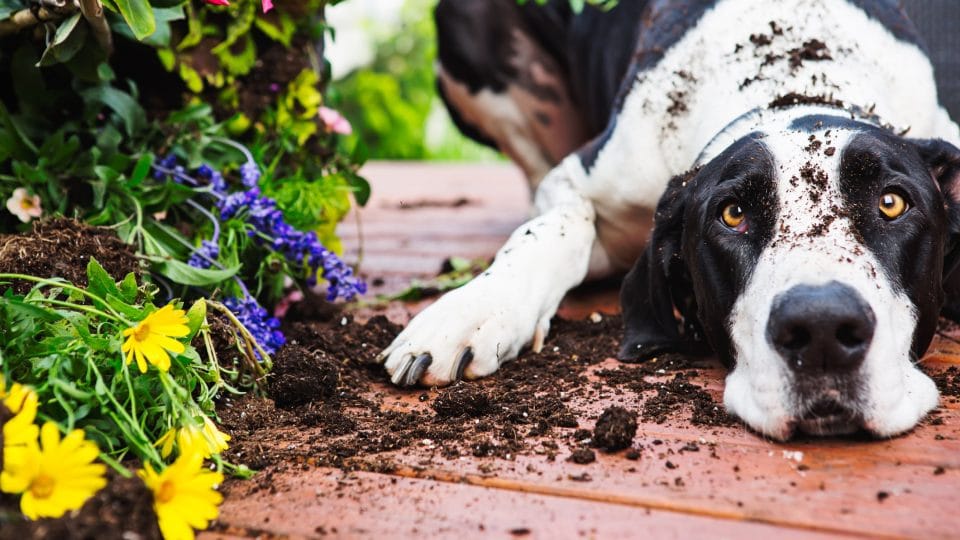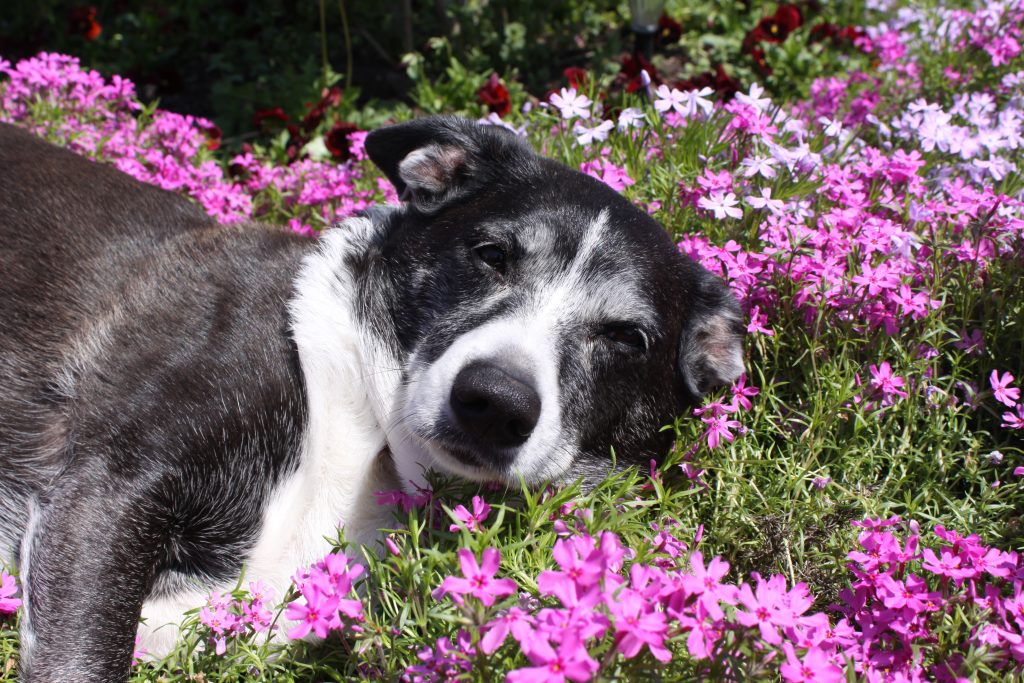Contents
- 1 Sowing Seeds of Safety: Starting Your Dog-Friendly Herb Garden
- 2 Non-Toxic Herbs and Safe Plants for Pooches
- 3 The Nose Knows: Managing Your Pet’s Curiosity
- 4 Pet-Friendly Garden Maintenance: Fertilizing and Watering
- 5 Cultivating Peace of Mind: Harvest Time and Health
- 6 FAQ – Your Dog-Friendly Herb Garden Questions Answered
- 7 Author
Key Takeaways
-
Identify non-toxic herbs and plants that are safe for dogs, such as basil, thyme, and parsley.
-
Learn to create barriers and use raised beds to prevent dogs from accessing certain areas of the garden.
-
Understand the importance of pet-safe fertilizers and how to choose them.
-
Train your dog to stay away from the garden and use natural repellents to protect plants.
-
Be vigilant for signs of herb toxicity in dogs and know what to do if they ingest something harmful.
Sowing Seeds of Safety: Starting Your Dog-Friendly Herb Garden

When you’re a pet owner with a green thumb, creating a garden that’s safe for your four-legged friend is a top priority. You want to cultivate a space where your herbs thrive and your dog can frolic without worry. A dog-friendly herb garden isn’t just a lovely addition to your home; it’s a commitment to the health and happiness of your pet.
Most importantly, it’s essential to know which plants are safe for your dog. Dogs are naturally curious creatures, and they often explore with their noses and mouths. To keep them safe, you’ll need to choose herbs that are non-toxic to canines. You’ll also want to design your garden in a way that keeps your dog out of harm’s way, whether that’s through physical barriers or strategic plant placement.
Recognizing Toxic Plants for Dogs
Before you plant a single seed, you need to know which herbs and plants are off-limits. Some common garden plants can be dangerous, even deadly, to dogs. For example, onions, garlic, and chives can cause gastrointestinal irritation and red blood cell damage in pets. It’s crucial to research each plant you’re considering for your garden and ensure it’s safe for your dog.
Here’s a tip: Keep a list of toxic plants on your fridge or in your gardening journal. This will help you avoid accidentally purchasing a harmful herb.
Creating a Physical Barrier Between Pets and Plants
Even with non-toxic plants, it’s wise to set up some boundaries. Dogs can trample delicate herbs or use your garden as their personal bathroom, which isn’t ideal for the health of your plants or your pup. Fencing off your garden or using raised beds can keep your dog away from the plants. If you’re using raised beds, make sure they’re high enough to prevent your dog from jumping in.
Think about incorporating a low fence or a decorative border that’s tall enough to deter your dog but still allows you to enjoy the view of your herb garden. You can also place decorative stones or pavers around the beds to create a clear visual boundary for your pet.
Non-Toxic Herbs and Safe Plants for Pooches

Now let’s dive into the fun part: choosing the herbs for your dog-friendly garden. There are plenty of aromatic, flavorful options that are perfectly safe for your canine companion.
Basil, Thyme, and More: Herbs Your Dog Can Sniff Safely
Basil is a fantastic choice for a pet-safe herb garden. Not only is it non-toxic, but it’s also known for its anti-inflammatory properties. Thyme is another great option—it’s hardy and can even help with respiratory health. Parsley, in small amounts, can freshen up your dog’s breath and is rich in vitamins.
Remember, while these herbs are safe for dogs, moderation is key. Large amounts of any herb can cause stomach upset in pets.
Danger-Free Greens: Veggies and Herbs That Won’t Harm Your Pet
Besides herbs, there are also several vegetables that are safe and healthy for dogs. Carrots, for instance, make a crunchy, nutritious snack. Cucumbers are another good choice, as they’re low in calories and high in water content. Just like with herbs, make sure to introduce any new veggies to your dog’s diet gradually and in moderation.
Here are some dog-friendly herbs and veggies you might consider for your garden:
-
Basil – anti-inflammatory, antioxidant
-
Thyme – aids in respiratory health
-
Parsley – good for fresh breath, vitamins
-
Carrots – crunchy and full of fiber
-
Cucumbers – hydrating, low-calorie
By choosing these plants, you’ll be able to share the bounty of your garden with your dog without any worry. Plus, you’ll have the added benefit of knowing exactly where your food—and your dog’s treats—are coming from.
Using Raised Beds and Containers to Deter Digging Dogs
Raised beds and containers are not just for aesthetics; they serve a functional purpose in a dog-friendly garden. By elevating your herbs, you create a physical barrier that discourages your dog from digging up your prized parsley or romping through the rosemary. It’s a simple yet effective strategy to protect your plants and your pup.
When choosing containers, opt for sturdy materials that can withstand a few tail wags or the occasional bump. Ensure they’re high enough to be out of reach, but not so tall that they become unstable. You can also secure raised beds to the ground for extra stability.
The Nose Knows: Managing Your Pet’s Curiosity

Dogs explore the world through their sense of smell, and a garden full of intriguing aromas can be irresistible. It’s important to manage your pet’s curiosity in a way that allows them to enjoy the garden without causing chaos among the chives.
Training Tips to Prevent Pets from Munching on Your Mint
-
Start with basic obedience training, teaching commands like ‘leave it’ or ‘off’ to prevent your dog from eating plants.
-
Supervise your dog when they’re in the garden, especially in the beginning, to reinforce these commands.
-
Provide plenty of dog-friendly toys and play areas away from the garden to keep them entertained.
Training takes patience and consistency, but the reward is a dog that knows the boundaries of your garden. And remember, positive reinforcement goes a long way—offer treats and praise when your dog follows commands and stays away from the plants.
With time, your dog will learn that the garden is not their snack bar, and you’ll both be able to enjoy the space peacefully.
Natural Repellents: Safe Ways to Keep Fido Out of the Fennel
Sometimes, even with the best training, dogs need a little extra reminder to stay out of the garden. Natural repellents can be a gentle way to keep your furry friend at a safe distance from your herbs.
Consider planting a border of strong-smelling plants like marigolds or rosemary around the perimeter of your garden, which can act as a natural deterrent. You can also create a mixture of water and vinegar and spray it around the garden edges—just be careful not to spray it directly on your plants.
Pet-Friendly Garden Maintenance: Fertilizing and Watering

Maintaining your garden is crucial, but it’s important to do so in a way that won’t harm your pet. This means being selective about the fertilizers and pesticides you use, as well as how you water your garden.
Choosing Pet-Safe Fertilizers: What to Look For
When it comes to fertilizing your garden, always opt for pet-safe products. Look for organic fertilizers that don’t contain chemicals or toxic ingredients. Compost can be a great option, as it’s natural and rich in nutrients—just make sure it doesn’t contain any food waste that could be harmful to dogs.
Here are some ingredients to avoid in fertilizers:
-
Blood meal, which can cause vomiting and diarrhea in dogs if ingested in large amounts.
-
Bone meal, which can form a large, cement-like ball in the stomach if consumed in large quantities.
-
Cocoa mulch, which contains theobromine, the same substance that makes chocolate toxic to dogs.
By choosing the right products, you can feed your garden without putting your pet at risk.
Hydration with Caution: Ensuring Water Features are Dog Safe
Watering your garden is another area where pet safety comes into play. If you have a water feature like a fountain or a pond, make sure the water is clean and free of algae, which can be harmful to dogs if ingested. Also, avoid using chemicals to clean your water features that could be toxic to pets.
Consider using a drip irrigation system, which targets the roots of your plants and minimizes standing water. Not only is this an efficient way to water your garden, but it also helps prevent your dog from drinking from areas treated with fertilizers or pesticides.
Cultivating Peace of Mind: Harvest Time and Health

Harvest time is a moment of pride for any gardener, but when you share your home with a dog, it’s also a time to be extra vigilant. Ensure that your dog doesn’t snatch a fallen herb or veggie that could upset their stomach.
When to Harvest Herbs with Your Hound in Mind
Harvest your herbs when your dog is indoors or distracted in another part of the yard. It’s also a good idea to check the garden for any dropped leaves or stems after you’ve finished, as these could be tempting for a curious canine. Consider using pet-friendly ways to enhance your garden to ensure your hound’s safety.
Remember, if your dog does eat something from the garden, monitor them closely for any signs of distress. If you notice anything out of the ordinary, contact your vet immediately.
By following these dog-friendly gardening tips, you can enjoy the fruits of your labor and rest easy knowing your dog is safe. A dog-friendly herb garden is a perfect blend of responsibility and enjoyment, creating a shared space that both you and your pet can cherish.
Identifying Signs of Herb Toxicity in Dogs
While you’re taking all the precautions to ensure your herb garden is dog-friendly, accidents can happen. It’s crucial to know the signs of herb toxicity in dogs. Symptoms can range from mild to severe and may include vomiting, diarrhea, excessive drooling, lethargy, or abnormal heart rate. Some herbs can cause specific reactions; for instance, certain types of mint may cause gastrointestinal upset.
If you suspect your dog has ingested a toxic plant, contact your veterinarian immediately. Quick action can make all the difference. Keep a list of emergency numbers handy, including your vet and the ASPCA Animal Poison Control Center.
FAQ – Your Dog-Friendly Herb Garden Questions Answered

As a responsible pet owner, you likely have questions about creating and maintaining a dog-friendly herb garden. Here are some common queries and their answers to help you navigate the process.
What are the top dog-friendly herbs to grow?
When planning your pet-safe garden, consider herbs like basil, dill, cilantro, and thyme. These are not only safe for dogs but also useful for your cooking. Rosemary and sage are other great options that can enhance your dishes while being non-toxic to your furry friend.
How can I stop my dog from digging in the herb garden?
One of the challenges of combining dogs and gardens is the canine love for digging. To deter this behavior, try these steps:
-
Provide a designated digging area in the yard with loose soil or sand.
-
Use physical barriers like decorative fences or netting around your garden.
-
Employ deterrents such as citrus peels or a vinegar-water spray around the perimeter.
-
Keep your dog exercised and entertained to lessen the urge to dig out of boredom.
Consistency is key. With patience and positive reinforcement, your dog can learn to leave the garden alone.
Are there any natural repellents to keep dogs away from certain plants?
Yes, there are several natural repellents that can help protect your plants from your canine companion:
For example, some dogs dislike the scent of citrus. Scatter lemon or orange peels around your herbs as a deterrent. You can also create a spray with water and a bit of citrus juice or vinegar and spritz it around the garden’s edges. Remember, never apply these mixtures directly onto the plants as they can cause damage. For more tips on maintaining a pet-friendly garden, check out pet-safe organic insect repellent strategies.
Example: “When I noticed my dog, Rufus, taking a little too much interest in my lavender plants, I scattered orange peels around the area. His nose wrinkled at the citrus scent, and he decided to keep his distance. It was a simple and effective solution.”
What should I do if my dog eats something from the garden?
If your dog eats something from the garden, first identify what they’ve ingested. If it’s a dog-safe herb or plant, they’re likely fine, but monitor them for any signs of digestive upset. However, if they’ve eaten something potentially toxic, or if you’re unsure, call your vet immediately. Keep a sample of the plant for identification, as it can assist the vet in treatment.
Can my dog’s waste be used as a natural fertilizer in the garden?
While composting is a great way to recycle organic waste, using dog waste as fertilizer is not recommended. Dog feces can contain parasites and pathogens harmful to humans and should not be used in gardens, especially those with edible plants. Instead, dispose of your dog’s waste properly or consider a pet waste composting system designed to handle these issues safely.
Creating a dog-friendly herb garden is a delightful way to blend your passion for gardening with the love for your pet. By selecting the right plants, setting boundaries, and maintaining a safe environment, you’ll cultivate not just herbs but also peace of mind, knowing that your furry friend is safe. Happy gardening!




Leave a Reply